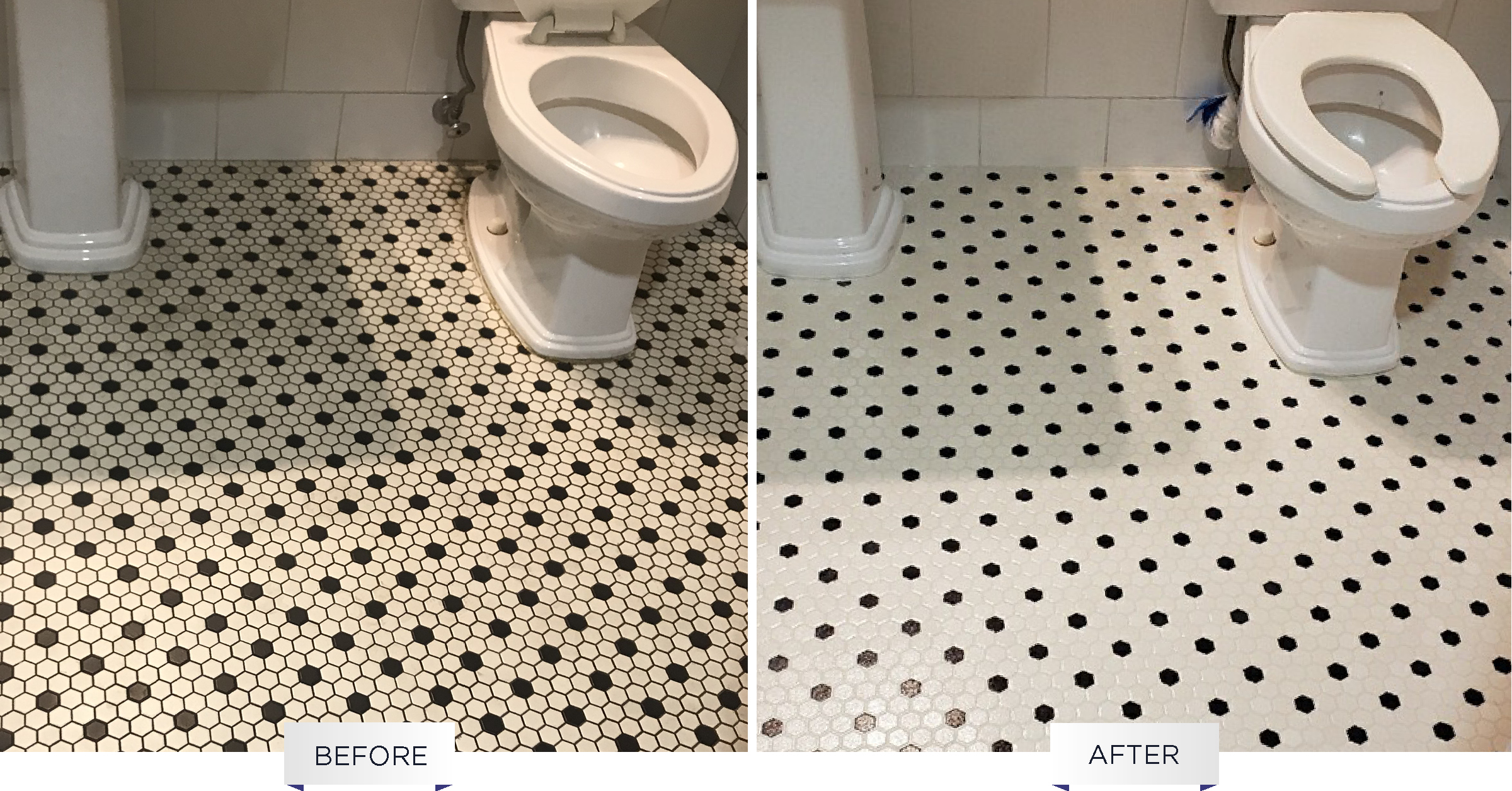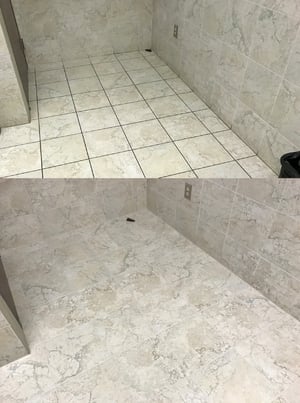The use of tile and grout in building has literally been employed for millennia. That’s a pretty strong testament for its value and appeal. On the other hand, cleaning dirty grout lines with an old toothbrush has become synonymous with grueling punishment, so much so, we often see or hear it mentioned in movies and TV. If tile and grout is so effective, why would anyone need to spend hours on their hands and knees scrubbing it with a toothbrush?
The short answer is cementitious grout is porous. In its natural state, it’s riddled with tiny holes that will absorb any liquid or contaminant it comes into close contact with. This is why grout lines darken and why it’s so difficult to clean. The long answer? Anyone who needs to scrub grout lines with a toothbrush is working with untreated grout or doesn’t know how to maintain their tile and grout surfaces.
Untreated Grout
There’s an astonishing array of tile available today, but much of it comes already glazed and fairly water resistant. Because of this, some might feel treating grout lines may be unnecessary, but in most instances, grout lines should be sealed to prevent moisture absorption, contamination and structural damage. How that protection is best applied will depend on the tile type and environment, as well as the needs and stylistic preferences of the customer. Having tile and grout surfaces sealed and protected is best done right after the initial installation or a restoration.

Call the Professionals: Protect your tile and grout surfaces from future foul odors and contaminants.
Improper Cleaning
When grout lines turn grimy and darken with dirt and mildew and routine cleaning practices become increasingly less effective, it is often the result of damage or wear to the tile and grout surface. Facility managers tend to know their business and understand the necessity of sealing porous grout lines, but improper maintenance or aggressive cleaning with harsh chemicals and brushes can ruin existing sealants and shields. This, of course, allows moisture and contaminants to penetrate beyond the damaged sealant and into the porous grout itself, leading to staining, bacterial growth and foul odors.
At this point, cleaners can also become the enemy. The Tile Council of North America, Inc. warns, “the grout can absorb the soap as well as a stain, do not clean with oil or wax based cleaners (Murphy's Oil soap, Pine Sol, etc.). These products will leave a waxy or oily film in the grout. Even good alkaline cleaners, if not properly rinsed, will leave a sticky soap film. This usually attracts dirt.”
 Good maintenance practices – in addition to professional sealing or protection – will also reduce discoloration and the buildup of contaminants in grout lines. Traditional string mops do little to aid sanitation and often just push dirt and wastewater across the floor. Grout lines then act as tiny troughs, filling with foul liquid until it is absorbed or the water evaporates, leaving a dirty residue behind. Microfiber mops, specifically designated for use in that area, are a much better choice and wet vacs can be used to remove wastewater. The Tile Council of North America suggests the “best way to clean grout is to apply the cleaner and then vacuum ("shop vac") up the dirty water. This lifts the dirt off the joint. Apply, rinse with water and vacuum that water up. This lifts off any remaining soap film.”
Good maintenance practices – in addition to professional sealing or protection – will also reduce discoloration and the buildup of contaminants in grout lines. Traditional string mops do little to aid sanitation and often just push dirt and wastewater across the floor. Grout lines then act as tiny troughs, filling with foul liquid until it is absorbed or the water evaporates, leaving a dirty residue behind. Microfiber mops, specifically designated for use in that area, are a much better choice and wet vacs can be used to remove wastewater. The Tile Council of North America suggests the “best way to clean grout is to apply the cleaner and then vacuum ("shop vac") up the dirty water. This lifts the dirt off the joint. Apply, rinse with water and vacuum that water up. This lifts off any remaining soap film.”
The removal of wastewater and rinse water is a critical part of keeping grout lines attractive and sanitary but sealing and properly maintaining tile and grout surfaces offers the best protection against soiled, odorous grout lines. Tile and grout restoration professionals can be consulted to determine the best line of defense for your tile and grout surfaces, as well as when to refresh any sealants and the best cleaning practices for maintaining them.

